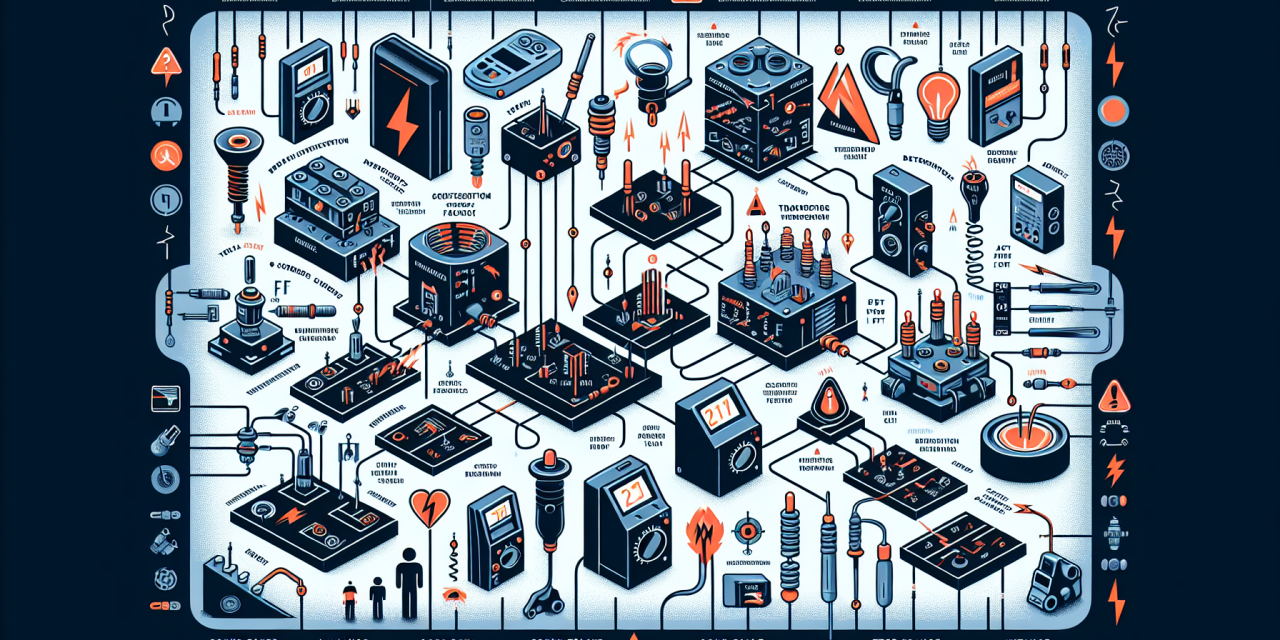Table of Contents
- Introduction
- Understanding Electrical Faults
- Analysis of Electrical Faults
- Remedies and Solutions
- Conclusion
- FAQs
Introduction
Electrical faults can create massive disruptions in operations, leading to increased safety risks, costly downtime, and significant repair expenses. Thus, understanding how to properly identify and rectify these faults is crucial for engineers and technicians alike. This post delves into the causes, analysis, detection methods, and remedies related to electrical faults. We’ll also explore a valuable resource, the Electrical Fault Analysis & Remedies: Detection and Solutions Course, which can enhance your skills further.
Understanding Electrical Faults
To begin, let’s clarify what electrical faults actually entail. Essentially, an electrical fault occurs when the current flow deviates from the intended circuit path. This deviation can lead to excessive current flow, overheating, and damage to electrical components.
Root Causes of Electrical Faults
Understanding the root causes of electrical faults allows us to pinpoint potential problem areas and take proactive measures. Common causes include:
- Insulation Failure: Over time, insulation may degrade due to factors like heat, moisture, or mechanical stress.
- Overloading: Exceeding the rated capacity of electrical devices can lead to overheating and circuit failure.
- Loose Connections: Poorly connected wires or terminals can lead to arcing and eventual failure.
- Environmental Factors: Corrosive substances or extreme temperatures can damage electrical components, triggering faults.
- Wear and Tear: Aging infrastructure often manifests electrical faults due to general deterioration.
Common Types of Electrical Faults
Recognizing different types of electrical faults is equally important for efficient problem-solving. Here are the common types:
- Short Circuits: This occurs when the electrical path bypasses the intended load, often leading to excessive current flow.
- Open Circuits: An incomplete circuit that inhibits current flow usually results from a faulty wire or connection.
- Ground Faults: These faults occur when the current unintentionally flows to the ground, posing severe safety risks.
Impacts of Electrical Faults
Electrical faults can have dire implications for both safety and operations. For instance:
- Safety Risks: Electrical faults can lead to fires, equipment damage, and even electrocution.
- Financial Loss: Operational disruptions often translate to financial loss due to downtime and repair costs.
- Reputation Damage: Frequent outages or electrical failures may tarnish an organization’s reputation and reliability.
Analysis of Electrical Faults
Identifying and analyzing electrical faults is crucial for timely and effective interventions. This process involves various detection methods and diagnostic techniques.
Detection Methods
When dealing with electrical faults, employing the right detection methods can significantly ease the troubleshooting process. Some widely used techniques include:
- Visual Inspection: Regular checks can reveal obvious signs of wear, damage, or loose connections.
- Current and Voltage Testing: Using ammeters and voltmeters allows technicians to assess whether specified limits are exceeded.
- Thermal Imaging: Infrared cameras identify hot spots that might indicate potential issues such as overloads or loose connections.
Fault Diagnosis Techniques
Once detection methods reveal a fault, it’s time to diagnose the issue. Effective diagnosis requires a systematic approach, such as:
- Testing Equipment: Ensure that appropriate diagnostic tools, like insulation resistance testers, are used for accurate readings.
- Utilizing Diagnostic Software: Specialized software can assist in simulating faults and determining their causes.
- Expert Consultation: In complex scenarios, consulting experts can provide insights into less obvious faults.
Remedies and Solutions
After thorough analysis and diagnosis, implementing effective remedies can mitigate electrical faults and prevent future incidents.
Preventive Measures
Prevention is always better than cure! Organizations should prioritize:
- Regular Maintenance: Scheduled inspections can catch problems early, saving time and money in the long run.
- Employee Training: Equip staff with knowledge about electrical safety and standards to reduce human error.
- Investment in Quality Equipment: Using high-quality materials and components can minimize risks associated with electrical faults.
Long-term Solutions
For long-term resilience against electrical faults, consider the following:
- Implementing Upgrades: Upgrading outdated equipment and systems enhances reliability and safety standards.
- Adopting Smart Technology: Smart metering and monitoring systems allow for real-time tracking of electrical usage, preventing overload.
- Establishing Emergency Protocols: Developing response plans ensure everyone knows how to act during electrical failures.
FAQs
What are the most common signs of electrical faults?
Common signs of electrical faults include frequent tripping of circuit breakers, flickering lights, burning smells, and scorch marks around outlets or plugs.
How can I ensure electrical safety in my home?
To maintain electrical safety, regularly inspect wiring, use surge protectors, and avoid overloading outlets. Consider periodic professional inspections for added security.
What is the best way to educate my team about electrical faults?
Offering training sessions, such as the Electrical Fault Analysis & Remedies: Detection and Solutions Course, can improve your team’s understanding of electrical systems and fault prevention.
When should I consult a professional?
If you notice persistent electrical issues, such as frequent breaker trips or unusual noises, it’s wise to consult a certified electrician for a thorough diagnosis.
Conclusion
In conclusion, understanding electrical faults—from their causes to their detection and remedies—is essential for anyone working with electrical systems. This holistic view helps prevent hazards and minimizes downtime. As you enhance your knowledge through resources such as the Electrical Fault Analysis & Remedies: Detection and Solutions Course, you ensure a safer and more efficient working environment. Embrace these insights, and take proactive steps to protect your operations against electrical faults!
For further professional growth, check out these insightful articles that cover various important skills and strategies:
- Mastering Project Management: Unlocking Success Through Effective Training Seminars
- Effective Decision Analysis: Strategies for Operation and Maintenance Professionals
- Mastering the Art of Contracts: A Comprehensive Guide to Reading, Writing, and Negotiating Skills
- Empowering Leaders Through Effective Communication and Coordination
- Mastering Advanced Supervisory Skills: A Journey to Exceptional Leadership





